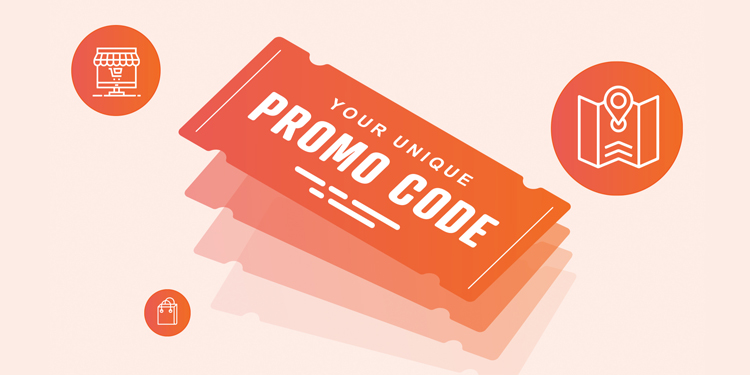Introduction
In the era of social media dominance, influencers have become key players in shaping consumer behavior and driving brand engagement. One significant aspect of their impact is the use of influencer codes – unique discount or promo codes provided by influencers to their followers. This article explores the dynamics, advantages, and potential pitfalls associated with influencer codes in the realm of influencer marketing.
The Rise of Influencer Marketing
Influencer marketing has evolved from a niche strategy to a mainstream advertising method, with brands allocating substantial budgets to collaborate with influencers across various platforms such as Instagram, YouTube, TikTok, and more. These digital tastemakers wield immense influence over their followers, making them ideal partners for brands seeking to tap into specific demographics.
Understanding Influencer Codes
Influencer codes are alphanumeric sequences or words provided by influencers to their audience, entitling them to exclusive discounts or promotions when making a purchase from a particular brand. These codes are often prominently featured in the influencer’s content, be it a caption, story, or dedicated post. The idea is to create a sense of exclusivity and reciprocity, encouraging followers to engage with the brand and, ultimately, make a purchase.
Advantages of Influencer Codes
-
Increased Brand Awareness: Influencer codes serve as powerful tools for increasing brand awareness. By associating with influencers, brands can leverage the influencer’s existing reach and credibility to introduce their products or services to a broader audience.
-
Audience Trust and Credibility: Followers tend to trust influencers they follow, viewing them as authentic and relatable. When influencers share promo codes, it signals a personal endorsement, enhancing the perceived credibility of the brand and increasing the likelihood of followers making a purchase.
-
Higher Conversion Rates: The sense of exclusivity and the incentive of a discount often lead to higher conversion rates. Followers are more likely to act on a call-to-action when presented with a limited-time offer or exclusive deal through an influencer code.
-
Measurable ROI: Influencer marketing campaigns can be challenging to quantify in terms of return on investment (ROI). However, influencer codes provide a measurable metric – the number of times a code is used. Brands can track the success of a campaign by monitoring code usage and correlating it with sales data.
-
Data Collection and Customer Insights: When followers redeem influencer codes, brands gain valuable data about their customer base. This information can be used to refine marketing strategies, tailor future collaborations, and better understand the preferences and behaviors of their target audience.
Potential Pitfalls of Influencer Codes
-
Overreliance on Short-Term Gains: While influencer codes can generate quick wins and spike sales, brands must be cautious about overemphasizing short-term gains. A reliance on constant discounting may devalue the brand in the long run and attract customers primarily interested in discounts rather than brand loyalty.
-
Inauthentic Collaborations: If influencer collaborations appear forced or inauthentic, followers may perceive them as insincere attempts to drive sales. Maintaining authenticity in influencer partnerships is crucial to preserving the trust and loyalty of the audience.
-
Code Misuse or Abuse: Influencer codes are susceptible to misuse or abuse, such as unauthorized sharing on coupon websites. This can lead to unintended discounts, negatively impacting a brand’s revenue and profit margins.
-
Limited Reach and Audience Segmentation: Relying solely on influencer codes may limit a brand’s reach to the influencer’s existing audience. To maximize impact, brands should diversify their marketing strategies and collaborate with influencers whose followers align with their target demographics.
-
Saturation and Code Fatigue: Overusing influencer codes or bombarding followers with too many promotions can lead to code fatigue. When followers become desensitized to discounts, the effectiveness of future influencer code campaigns may diminish.
Strategies for Successful Influencer Code Campaigns
-
Strategic Collaboration: Brands should carefully select influencers whose values align with theirs, ensuring a natural and authentic partnership. This strategic alignment fosters genuine endorsements, increasing the effectiveness of influencer codes.
-
Clear Communication and Guidelines: Establishing clear communication and guidelines with influencers is crucial. Brands should clearly outline the campaign objectives, expectations, and any specific messaging or branding requirements to ensure a cohesive and authentic campaign.
-
Diversification of Marketing Channels: While influencer codes are effective, brands should complement them with other marketing channels to diversify their reach. Combining influencer marketing with other strategies ensures a holistic and well-rounded approach to brand promotion.
-
Engagement and Community Building: Brands should encourage influencers to engage with their audience beyond promotional content. Genuine interactions and community building efforts can foster a loyal customer base that goes beyond one-time purchases driven by influencer codes.
-
Limited-Time Offers and Exclusivity: Creating a sense of urgency and exclusivity enhances the appeal of influencer codes. Limited-time offers or exclusive promotions encourage followers to act quickly, driving higher conversion rates.
Conclusion
Influencer codes are potent tools within the influencer marketing arsenal, providing brands with the means to reach a broader audience, enhance credibility, and drive sales. However, success hinges on a strategic approach that prioritizes authenticity, audience alignment, and a balanced mix of marketing channels. By navigating the advantages and potential pitfalls of influencer codes, brands can harness the full potential of influencer marketing to build lasting connections with their target audience.



